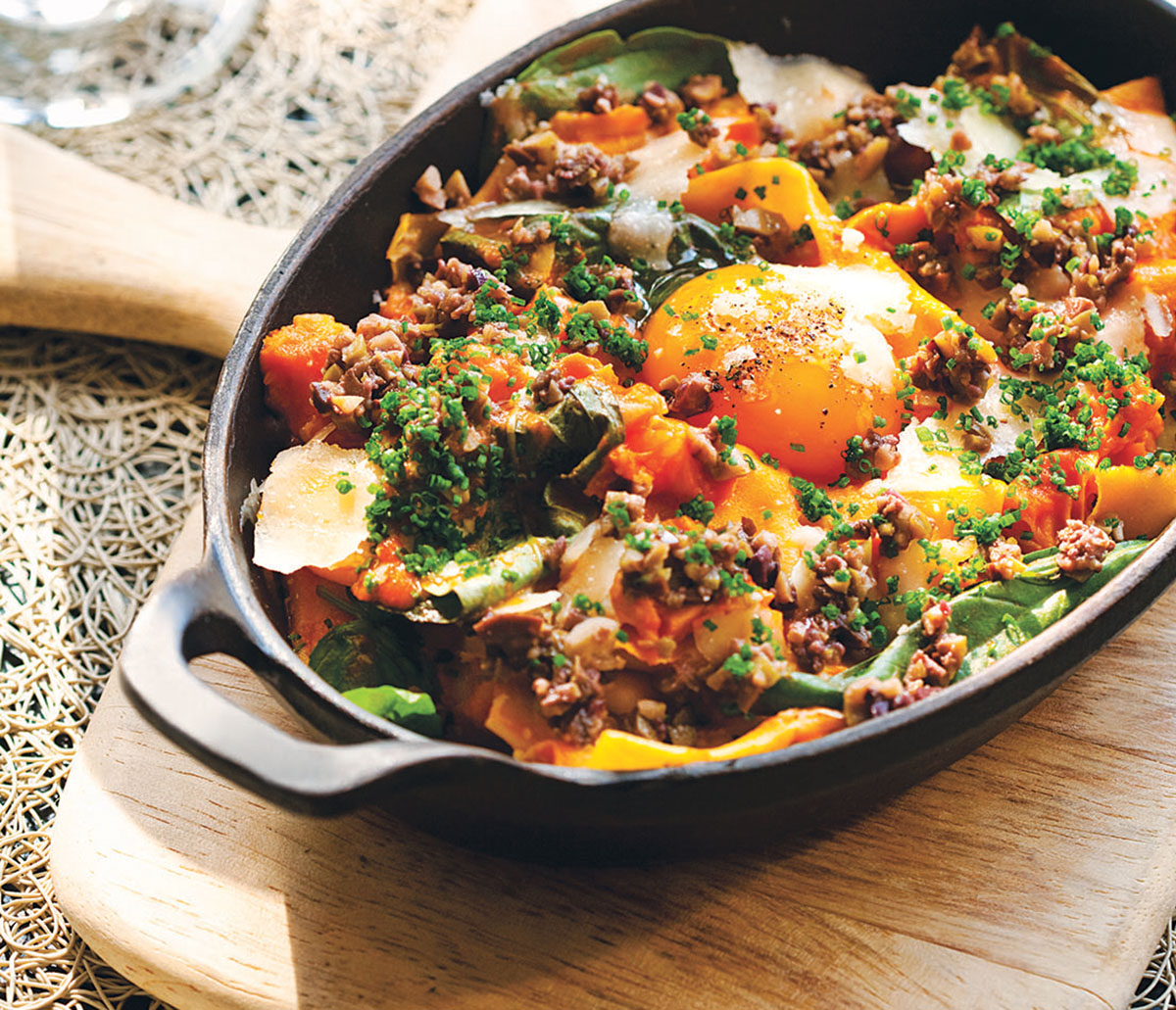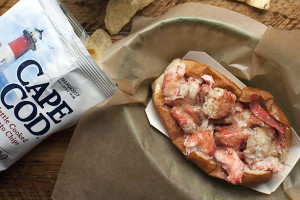Dining Out: Rocca

PHOTO BY KELLER + KELLER
The new chef at Rocca, Tiffani Faison, is doing what Todd English would be doing now if his career hadn’t exploded — if he’d remained the curious, food-loving, French-trained chef he was when restaurateur Michela Larson first hired him. Still fresh from the CIA, English cooked in Italy before he helped Larson open Michela’s. That was a long time ago — the mid-’80s — and both chef and mentor have since accomplished many things.
You know what happened to English. But what about Larson? She went on to cultivate other young talents, many of them women, and open a slew of other restaurants (Blu, Rialto, and then Rocca). And, thank heaven, she stayed here. Wherever Larson is, that’s a place you want to go.
Her newest hire, Faison, worked with English at a number of restaurants, and absorbed classic French techniques at Daniel Boulud Brasserie in the Wynn Las Vegas. Along the way she also picked up significant pasta-making skills, which serve her very well at Rocca — a restaurant inspired by Liguria, the Riviera region north of Tuscany and south of Milan. And she developed an interest in molecular gastronomy techniques, an interest she’s carried further than any other Boston chef whose food I’ve tried lately.
As for Liguria, well, that concept has been pretty loose since Rocca opened two years ago. The opening chef, Tom Fosnot, put on the menu some gestures to the region: It’s the birthplace of pesto, so there was an excellent, almost minty-fresh version made with walnuts, not pine nuts. And there was the low chickpea flatbread similar to the famous panisse or socca of Nice, as well as focaccia and fish. That regional personality is nearly gone now.
Today Rocca is the restaurant Michela’s might have evolved into, with food that’s in many ways quite similar: a seemingly Italian menu whose dishes are based on French technique. It’s far more complicated than anything you’d find in an Italian kitchen, marked by lots of butter, cream, unorthodox ingredient combinations, and restless experimentation. But if Faison is less bold than English, she’s also aiming for what he did at the start — powerful, direct, Italian-inspired flavors.
When everything comes together (which, I’d better say up front, isn’t enough of the time), she makes some powerhouse dishes. Two, in particular, stand out: pork that’s ridiculously rich and ridiculously good, and a take on lasagna that’s restrained, lightly tomatoey, and irresistible.
The pork dish ($27) plays off the current fad for packing as much sugar, fat, and salt as you can into the protein. The nominal idea is to match it with a version of mostarda, the Italian condiment of fruits boiled in mustard-spiced syrup. But the more proximate influence is David Chang’s Momofuku bars in New York. Faison smokes and braises the Berkshire pork shank and butt, then presses the meat into cubes packed with a mustardy vinegar-honey stock; these she wraps in fat, breads with panko, and deep-fries. Yeah, she likes excess. And this is blissful — the best entrée.
With the pork, Faison is also playing with sous-vide techniques, ones that haven’t caught on here as much as they have in New York, maybe because Boston’s health department hasn’t decided what to do about them. (Boiling meat in vacuum-sealed plastic bags at a very low temperature for a very long time can carry risks of botulism; chefs in New York, led by Thomas Keller of Per Se and Dan Barber of Blue Hill, banded together to establish a code of practices for the health department to approve, but that hasn’t happened here yet.) Faison plays it safe, working not with meat but with fruit — like peaches and plums when they’re in season — in vacuum-packed bags to concentrate the sugars and intensify the color, something Keller does a lot. Faison told me she aims to use techniques like this only to heighten flavor, without throwing dishes — or diners — off balance.
Spicy tomato lasagne ($13) is another example of what other Boston chefs are doing, and doing well: freeform sheets of pillowy, very good pasta in a spicy tomato sauce with tripe and a poached egg on top, the kind of thing Jamie Bissonnette might serve up the street at Coppa. The non-Italian, Todd-type touches are lots of butter and shallots in the tomato sauce, snipped chives on top, and a heavy hand with salty pecorino Sardo and diced olives. Like the pork, though, the dish hits the salt-spice-sweet bliss point.
Sadly, not much else does. When Faison adds bitter elements to the mix, the results can be weird, as with squid-ink strozzapreti ($14), a semolina pasta in a sauce of sweet shrimp, a 50-50 emulsion of olive oil and tomato sauce, and mentaiko, a spicy roe. Here the roe, combined with a pesto in which escarole substitutes for basil, just seems strange. So does the squid ink in the dough; the overwhelming salt and bitter edge make the dish pretty unpleasant.
Gnocchetti ($19), mini potato gnocchi, are better. Lobster coral and uni enhance the sweet chunks of charred lobster meat in the dish. But Faison can’t resist adding soy lecithin to the puréed uni-coral mixture to turn it into a foam, and I’ve pretty much had it with foams. You have to make a strong case that the flavor has more impact with the addition of air, and this doesn’t. Taleggio envelopes ($14), though, make a persuasive argument for carrageenan, another food-industry additive that chefs use to improve texture. Here it adds body to the cheese filling. Carrot juice in the dough, carrot mousse on the plate, and fresh peas and tendrils as a garnish together create a delicate but hearty dish.
If you can cope with the salt — which also invades the otherwise excellent homemade country bread, with an airy, moist crumb and crisp crust — you can find other terrific plates. Monkfish and shrimp sausage ($24) is really a quenelle mixture spiked with garlic, fennel seed, and chili flakes; piped into sausage casing; and grilled to make a wonderful summer sausage. Faison accompanies it with a homemade giardiniera of pickled cauliflower, peppers, onion, and celery, served over a white bean purée flavored with mustard and enriched with mascarpone. Tender spiced lamb loin ($28) in a licorice sauce (real candy bits, simmered with sambuca, star anise, and fennel) is pan-roasted with a subtly pungent dry rub that brings out its flavor. And a seasonal dish of summer bluefish ($25) is just that — perfectly fresh bluefish grilled and served in a bacon-chicken broth with vegetables. It’s something you could eat every night.
That’s what I’ll hope for more of at Rocca — along with more of Faison’s gelatos. There’s a great chocolate one ($6) sandwiched between orange “biscotti” that aren’t biscotti at all, but pale, buttery shortbread; there’s also banana gelato ($8) with peanut butter mousse, salted caramel, and Nutella. And, of course, I will go back. Larson is a great restaurateur, and Faison is a talent to watch.
500 Harrison Ave., Boston, 617-451-5151, roccaboston.com


